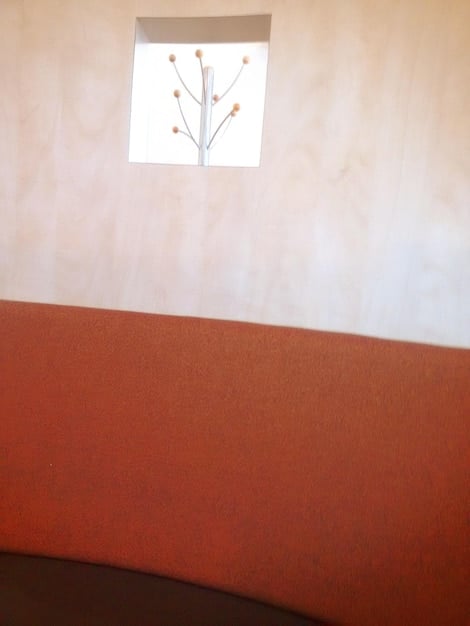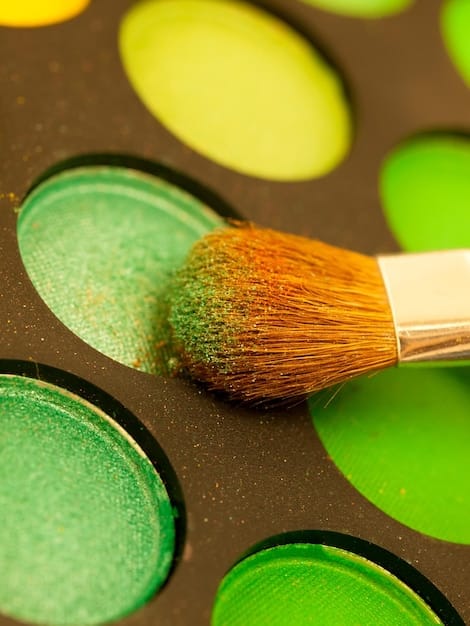The Ultimate Guide to Interior Paint Colors for Your Home in 2025

Advertisements
Choosing the right paint colors for your home’s interior in 2025 involves understanding emerging trends, considering your personal style, and evaluating the impact of color on mood and space functionality.
Embark on a colorful journey as we explore The Ultimate Guide to Choosing the Right Paint Colors for Your Home’s Interior in 2025, ensuring your space reflects both your personality and the latest design trends.
Advertisements
Understanding Color Psychology for Your Home
Color psychology plays a crucial role in how we experience our homes. Each color evokes different emotions and can significantly impact the overall atmosphere of a room. When selecting paint colors, it’s essential to consider the intended purpose of the space and the mood you wish to create.
The Impact of Warm Colors
Warm colors like reds, oranges, and yellows tend to be energizing and inviting. They can make a space feel cozier, but should be used cautiously in smaller rooms as they can sometimes feel overwhelming.
Advertisements
The Calming Effect of Cool Colors
Cool colors such as blues, greens, and purples often create a sense of tranquility and relaxation. These colors are ideal for bedrooms or bathrooms where you want to promote a calming environment.
- Red: Stimulating, energetic, and can increase appetite, making it good for dining rooms.
- Blue: Calming, serene, and can lower blood pressure, ideal for bedrooms and meditation spaces.
- Yellow: Cheerful, optimistic, and can brighten up a room, great for kitchens and living areas.
- Green: Natural, balanced, and can reduce stress, suitable for living rooms and home offices.
Ultimately, the best color choice depends on your personal preferences and the specific needs of each room. Understanding color psychology can help you make informed decisions that enhance your living space.
2025 Interior Paint Color Trends: What’s Hot
Staying abreast of the latest trends is essential for creating a contemporary and stylish home. In 2025, we’re seeing a shift towards warmer, earthier tones, along with a renewed appreciation for nature-inspired palettes and bold, expressive hues.
Earthy Neutrals Take Center Stage
Warm neutrals like terracotta, beige, and muted browns are poised to dominate interior design. These colors offer a grounding and comforting feel, making them perfect for creating cozy and inviting spaces.
Nature-Inspired Greens and Blues
Reflecting our desire to connect with the natural world, greens and blues inspired by forests, oceans, and skies will remain popular. Expect to see shades like sage green, deep teal, and powdery blue gracing walls.

- Terracotta: A warm, earthy tone that adds depth and sophistication to any room.
- Sage Green: A calming and versatile color that brings a touch of nature indoors.
- Deep Teal: A rich and luxurious hue that adds drama and elegance.
- Powdery Blue: A soft and serene color that creates a peaceful ambiance.
These trends reflect a broader movement towards creating homes that are both stylish and comfortable. By incorporating these colors into your interior design, you can create a space that feels both modern and timeless.
Considering Lighting and Room Size
The way light interacts with paint can dramatically alter its appearance. Natural light tends to enhance the true color, while artificial light can cast different shades and highlights. The size of your room also plays a significant role in determining the most suitable paint colors.
The Influence of Natural Light
Rooms with ample natural light can handle darker and more saturated colors without feeling cramped. Conversely, rooms with limited natural light benefit from lighter, reflective colors that brighten the space.
The Effect of Artificial Light
Different types of artificial light can influence the way paint colors appear. Incandescent light tends to warm up colors, while fluorescent light can make them appear cooler. LED lighting offers a more neutral and accurate representation of color.
When choosing paint colors, always consider the amount and type of light in the room. Test paint samples under various lighting conditions to ensure you’re happy with the final result.
Matching Paint Colors to Your Home’s Style
The style of your home should influence your paint color choices. Whether you have a modern, traditional, or eclectic aesthetic, selecting colors that complement your overall decor is essential for creating a cohesive and harmonious look.
Modern and Minimalist Homes
For modern and minimalist homes, neutral colors like white, gray, and beige are ideal. These colors create a clean and uncluttered look, allowing architectural details and furnishings to take center stage.
Traditional and Classic Homes
Traditional homes often benefit from richer, more saturated colors like deep blues, greens, and reds. These colors add warmth and character, creating a sense of timeless elegance.

- Modern: Opt for cool grays, whites, and blacks for a sleek, contemporary feel.
- Traditional: Choose warm beiges, creams, and greens to create a welcoming and classic look.
- Eclectic: Embrace bold colors, patterns, and textures to showcase your unique personality.
- Coastal: Select light blues, greens, and sandy neutrals to evoke a beachy and relaxed vibe.
By considering the style of your home when choosing paint colors, you can ensure a cohesive and visually appealing result. Don’t be afraid to experiment with different combinations until you find the perfect palette for your space.
Tips for Testing Paint Colors Before Committing
Testing paint colors before committing to a full room makeover is crucial. The color that looks perfect on a swatch might appear completely different on your walls due to lighting, room size, and other factors. Here are some tips for testing effectively:
Paint Samples on Multiple Walls
Apply paint samples to different walls in the room to see how the color looks under varying light conditions. Observe the samples throughout the day to get a comprehensive understanding of how the color changes.
Use Large Paint Boards
Instead of painting directly onto the walls, use large paint boards or poster boards. This allows you to move the samples around the room and see how they look against different furnishings and decor.
By taking the time to test paint colors thoroughly, you can avoid costly mistakes and ensure that you’re completely satisfied with your final choice.
Sustainable and Eco-Friendly Paint Options
As awareness of environmental issues grows, many homeowners are seeking sustainable and eco-friendly paint options. These paints are formulated with natural ingredients and have lower VOC (volatile organic compound) emissions, making them safer for both your health and the environment.
Low-VOC and Zero-VOC Paints
Low-VOC and zero-VOC paints contain minimal or no harmful chemicals, reducing indoor air pollution. These paints are a great choice for those with allergies or sensitivities, as well as for use in nurseries and children’s rooms.
Natural and Mineral-Based Paints
Natural and mineral-based paints are made from renewable resources and contain no synthetic ingredients. These paints are biodegradable and contribute to a healthier indoor environment.
- Look for certifications: Choose paints that are certified by reputable organizations like Green Seal or GREENGUARD.
- Consider water-based paints: Water-based paints generally have lower VOC emissions compared to oil-based paints.
- Check the ingredients: Read the label and avoid paints that contain harmful chemicals like formaldehyde or phthalates.
Opting for sustainable and eco-friendly paint options is a responsible choice that benefits both your home and the planet. By making informed decisions, you can create a healthier and more environmentally conscious living space.
| Key Point | Brief Description |
|---|---|
| 🎨 Color Psychology | Colors impact mood; warm colors energize, cool colors calm. |
| 🌱 2025 Trends | Earthy neutrals, nature-inspired greens, and blues are popular for 2025. |
| 💡 Lighting & Size | Natural/artificial light and room size affect color appearance. |
| 🌍 Eco-Friendly Options | Low-VOC and natural paints promote healthier indoor air quality. |
Frequently Asked Questions
▼
Consider the undertones in the white. Some whites have warm undertones (yellow or red), while others have cool undertones (blue or gray). Choose a white that complements your furniture and decor.
▼
Light and bright colors, such as pale blues, greens, and whites, are excellent for small bedrooms. These colors reflect light, making the room feel more spacious and airy.
▼
Paint samples on multiple walls to see them in varied light conditions. Use large paint boards instead of painting directly onto the walls for easier observation and flexibility.
▼
Yes, low-VOC paints are worth the investment. They contain fewer harmful chemicals, contributing to better indoor air quality and reducing health risks, especially for sensitive individuals.
▼
Light and neutral colors such as white, light gray, and pale pastels make a room appear larger by reflecting more light. Avoid dark colors, as they absorb light and can make the space feel smaller.
Choosing the right paint colors for your home’s interior in 2025 is an exciting opportunity to transform your living spaces. By understanding color psychology, staying updated on the latest trends, and considering factors like lighting and room size, you can create a home that reflects your personal style and enhances your overall well-being.